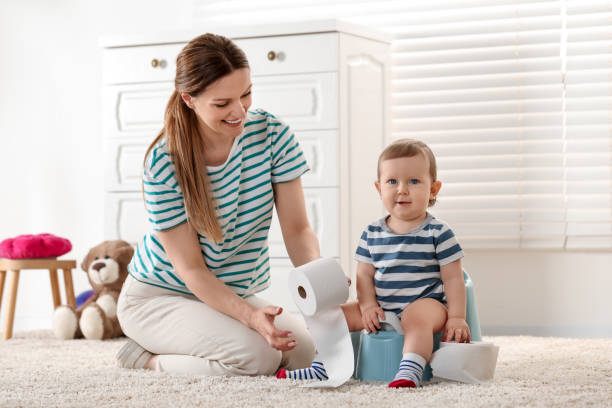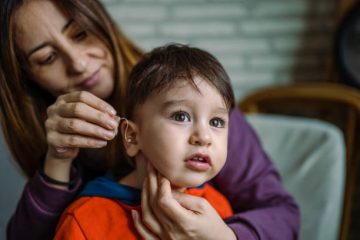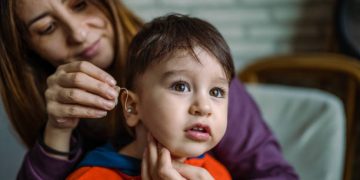What Every Parent Should Know About Bedwetting, Accidents, and Potty Training

Kyle’s sheets are wet again. The whole family is tired. #WishBedwettingWouldStop
In our culture, toileting issues are not openly discussed. In my pediatric urology practice, I deal with these issues all day with parents who are distressed and kids who feel bad about not being able to stay dry and miss sleepovers.
Many of these families were led to believe:
A) accidents and bedwetting are a part of childhood, and) it would be best if you let it go.
Both are incorrect. Most of what parents, and even some pediatricians, believe about toileting problems isn’t based on fact.
MYTH # 1
Children wet the beds because they are deep sleepers, or “their bladder hasn’t caught-up to their brain”, or for psychological reasons.
Hormonal or hereditary causes.
Reality The majority of children wet their beds because they have a clogged rectum.
The bulging, hard poop mass presses on the bladder, reducing its capacity and irritating the nerves that feed it.
Bedwetting does not result from a deep sleep, an underdeveloped bladder, or hormones.
Bedwetting is not necessarily passed on from one generation to the next. Instead, the tendency toward constipation is what’s passed along.
The constipation-bedwetting link is well documented in the scientific literature and is confirmed daily in my practice. Problem
Many doctors use inadequate methods to detect constipation. They ask the child how often they poop and then press on their abdomen. Some doctors do not know or believe that constipation is the most common cause of bedwetting.
Let’s talk about the evidence…
Sean O’Regan is a kidney specialist who was drawn to this topic by his 5-year-old son, who wets the bed at night. Anorectal Manometry revealed that his son’s rectum had been stretched so much by stools that he couldn’t feel an air balloon the size of a tangerine inflated inside his bottom. The rectum of his son had lost the tone needed to evacuate completely and also the ability to feel the urge to poop. The stool would pile up.
O’Regan’s Canadian team of researchers tested hundreds of children for enuresis and encopresis. Like O’Regan’s own son, they were all stuffed full of poop.
The wetting and soiling of their clothes stopped when they cleaned out their rectums with daily enemas.
In my clinic, we measure the diameters of the rectums for every child with toileting issues (X-rays can be conducted and performed more easily than anorectal measurements). Normal rectums are no more than 3 cm wide.
Over 90% of the wetting patients I have seen are extremely constipated with rectums that are stretched beyond normal. All bedwetting patients in our bedwetting study that was published in Global Pediatric Health had rectal diameters greater than 6cm.
My patients stop leaking once the rectums have shrunk back to their normal size and are no longer swollen.
Even the “deep sleepers,” the kids with “small bowels,” and those who have a family history of bedwetting.
I will insist that your doctor measure the rectal diameter and take an X-ray if he believes your child is not constipated.
MYTH 2
If you wait, your child will eventually “outgrow’ bedwetting or accidents.
Reality Many wetter children outgrow it; some of them come to my clinic in distressing 10th graders. Want to know which category your child falls into?
Most pediatricians will not show any concern for bedwetting in a child until they are at least seven years old. And even then, some won’t do anything. Research shows that this is not a good idea, especially if the child has accidents during the day or wets their bed every night.
Researchers concluded from a study of over 16,000 children that bedwetting is only a problem for those who have mild enuretic signs or kids who are wetter infrequently.
Bedwetting is more likely to occur in adults who have daily symptoms. If left untreated, a nine-year-old child who wets their bed has a 70 percent chance of becoming a 19-year-old who wets his bed.
My opinion: If you have a child who is older than four and is wetting the mattress, and especially if they show any of the signs listed in our Chart for 12 Signs That Your Child Is Constipated, insist upon an X-ray and aggressive treatment as discussed in myth number 5.
Holding stool is the cause of daytime accidents, which are similar to bedwetting. During the potty training process, kids will definitely have accidents. Children who aren’t fully toilet-trained may not be late bloomers, but they could just be constipated.
MYTH # 3
Parents who start the toilet training process too late can cause children to have difficulty.
Reality The children who are trained the earliest usually end up with severe problems a few years later. This is true for those 18-month-old potty-training prodigies!
In a study conducted at my clinic and published in Research and Reports in Urology it was found that children trained before the age of 2 were three times more likely to develop daytime wetting issues than children trained between 2 and 3 years old. Children who started training before age 2 had a tripled risk of developing daytime wetting problems compared to children who taught between 2 and 3.
Potty training 26-month-olds is not something I would recommend. I don’t. My experience has taught me that children under three should not be responsible for their toileting habits any more than the budget of the family. Toddlers can be taught to use the bathroom, but that does not mean they will follow their body’s urges. Children are more likely to hold.
I know that many parents feel pressured to complete potty training by the deadline. Find a new preschool. The
The risks of rushing or early toilet training are too high.
Why do late potty trainers pee and poop on their pants? These kids were constipated during potty training.
They failed from the start.
MYTH # 4
Constipation is not a problem for children who have soft stools or poop regularly.
Reality Many children with chronic constipation poop every day or even several times per day. They also have loose stools.
How is that possible? Constipated children need to poop frequently because a stretched-out rectal lacks the tone necessary to evacuate fully. A hard clog can be pushed aside by “fresh” soft poop, which may make a child appear to have diarrhea.
It’s not true that a child who poopes every day will be constipated.
Some doctors suggest the “corn test,” where you feed your child corn and note how long before it turns bright yellow.
It is worthless if she has kernels in her stool. Bowel transit is not an accurate indicator of constipation.
What can signify constipation among children? Jane and the Giant Poop explains that giant bowel movements are a red flag. Other signs include hard-formed poop that looks like rabbit pellets or a log, “skid marks” on underwear, stomachache, chronic uti infections, and accidents.
Most pediatricians miss constipation due to the ineffective guidelines set forth by the International Children’s Continence Society. They ask parents if their child’s bowel movements have been irregular and if the consistency of their stool is hard.
MYTH #5
A high-fiber diet combined with Miralax can help a child who suffers from chronic constipation.
Reality No amount of prunes can dislodge the hard mass of poop that is clogging up a child’s rectum. Daily,
Miralax in small doses will do the trick. Aggressive measures are the only way to restore a severely stretched, chronically stretched rectum to its normal size.
The Modified O’Regan Protocol (M.O.P. ) is the regimen that I recommend. The M.O.P. regimen combines enemas and oral laxatives such as Miralax or magnesium citrate. Enemas are safe to use on constipated children.
It’s crucial to clean out the rectum every day for a few weeks, no matter what method you choose. It will shrink, regain sensation and tone, stop invading the bladder, and stop irritating the nerves nearby. It is unlikely that a one-time cleaning will achieve all of these things.
Children have a deep-seated habit of withholding stool, so if you take half measures, the relapse rate is high.
As a reasonable alternative, I would recommend a Miralax high-dose clean-out, followed by a laxative maintenance regimen. My research and experience with over 2,000 patients have shown that laxatives do not work as well as enemas in treating bedwetting.
One study published in Global Pediatric Health found that 30% of patients treated by Miralax stopped wetting after three months compared to 85% of patients treated by M.O.P.
Enemas are completely safe. As I explain in The Physician’s Guide to M.O.P., a free download that you can give to any skeptical doctor, they do not cause dependency, electrolyte balance, or psychological trauma.
A high-fiber diet will help prevent constipation. Every day, I see patients with a junked-out diet that is exacerbating or compromising their recovery. The high-processed diet of our country is one major contributor to the potty problem epidemic. ( Early Toilet Training, for example.)
The first step is to clear the clog.
Why didn’t your child’s pediatrician mention all of this? Medical schools don’t teach the link between urinary and constipation problems in great detail.
This was not something I learned until I had started my practice, and I had already steered hundreds of patients in the wrong direction. Sean O’Regan’s research was never mentioned in my urology residency.
I found Dr. O’Regan a couple of years ago. He was retired and now lived in Arizona. I asked him how he felt his research was so compelling but never got much attention. “Constipation” is an unpleasant subject, he said. No one wants it to be discussed.












